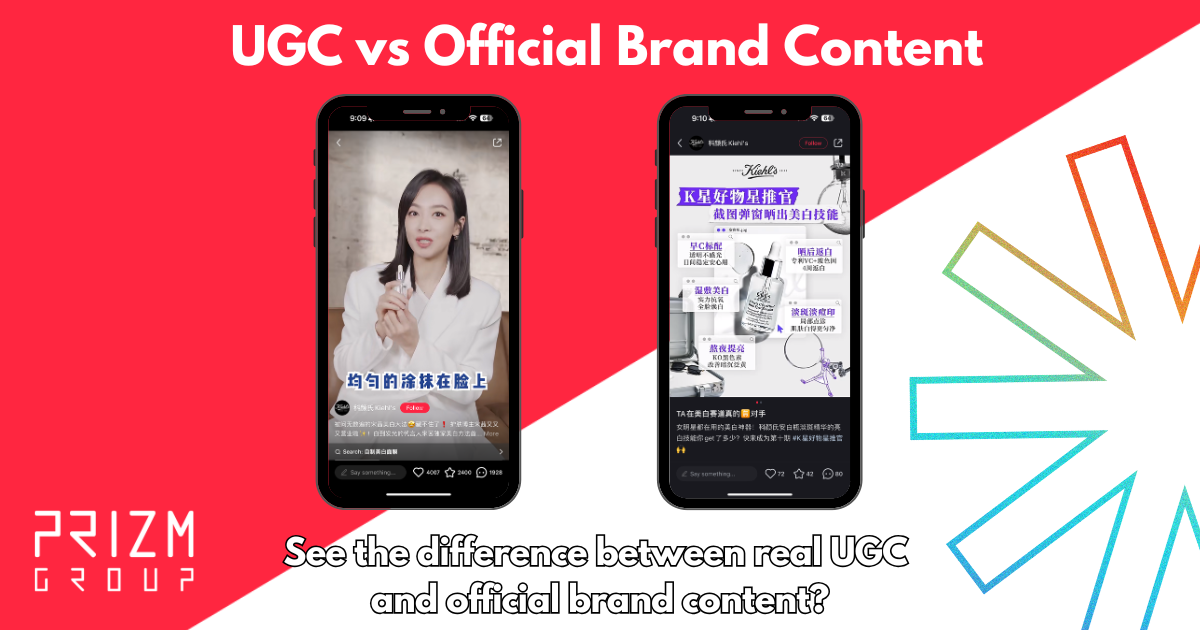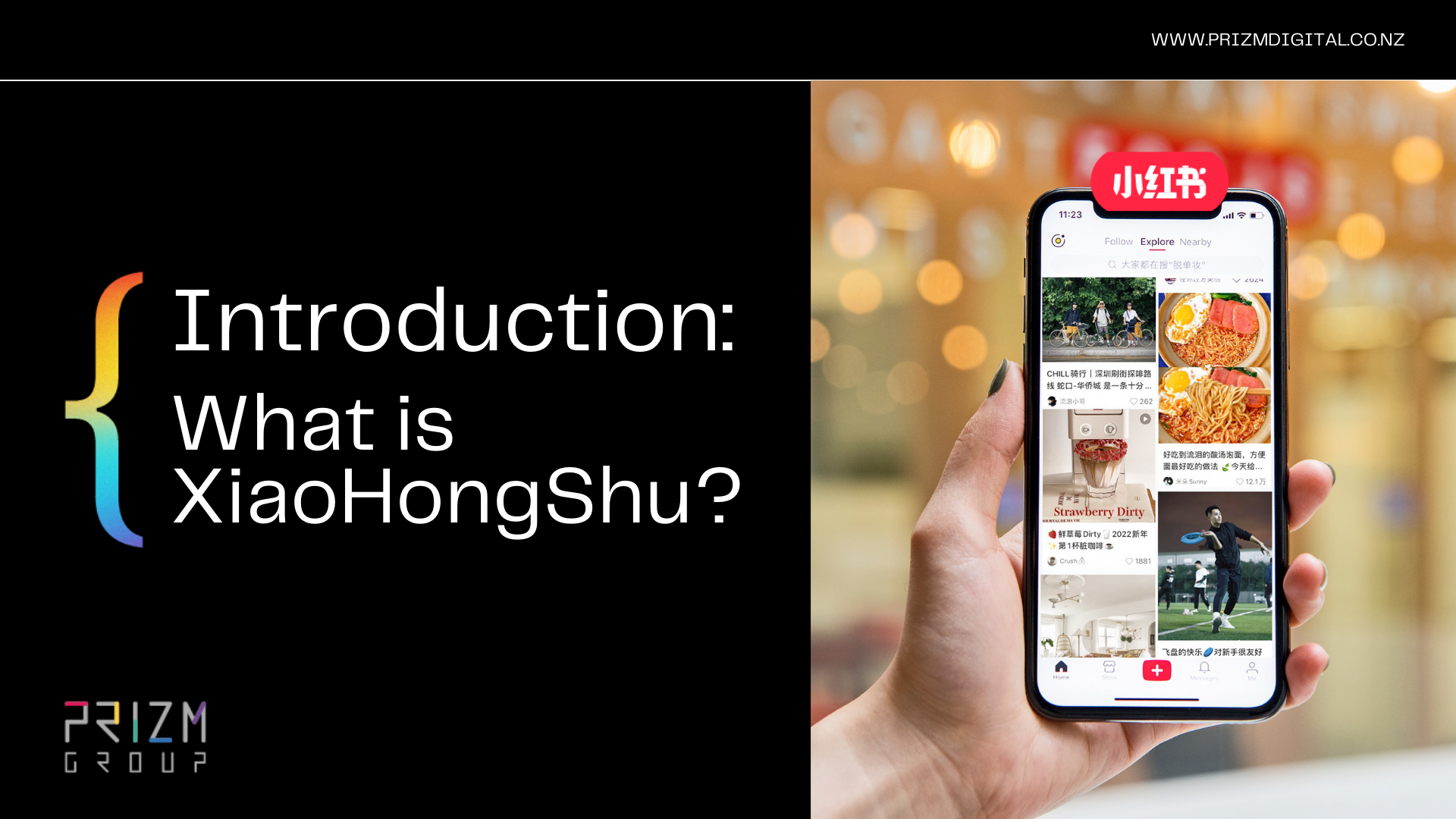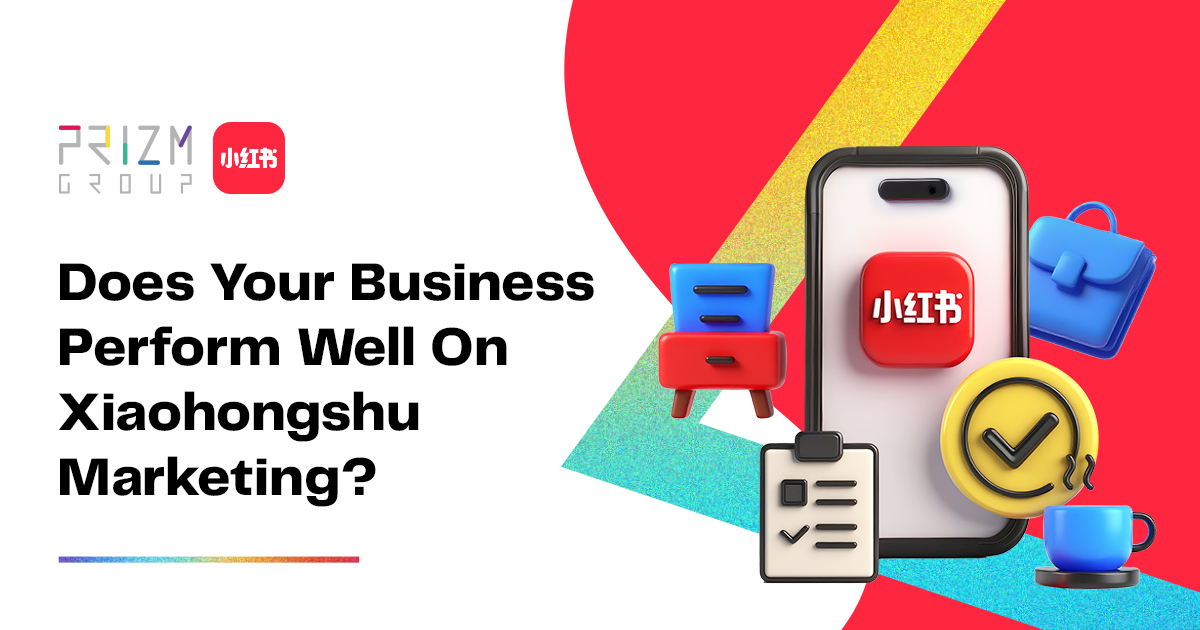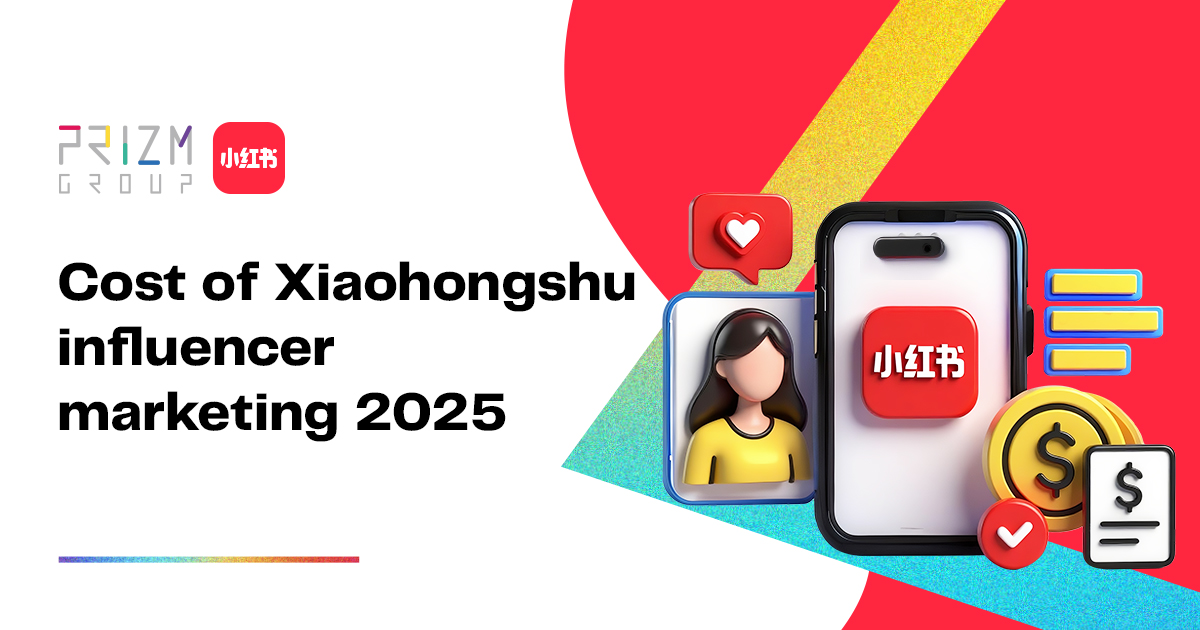What is XiaoHongShu (Little RED Book/REDNote)?
XiaoHongShu (Little Red Book, REDNote) is a popular social commerce platform that has taken China by storm, integrating user-generated content (UGC) with Plog, Vlog, and live-streaming features to create a unique online community.
Founded in 2013 by Charlwin Mao and Miranda Qu to share overseas shopping experiences, LRB has rapidly grown to more than 300 million monthly active users, driven by the demand for peer-driven recommendations and lifestyle inspiration.
Originally popular with female users (approximately 70% of its audience) interested in beauty, fashion, wellness, and lifestyle topics. LRB’s demographic is shifting as more male users join for content on technology, fitness, and even property and investments.
Additionally, overseas Chinese find LRB useful not only as a shopping guide but also as a community for sharing experiences and challenges associated with living abroad.
With most users aged 18 to 40, LRB speaks directly to a generation seeking quality and self-expression.
The platform has become a lifestyle bible for Millennials and Gen Z, influencing everything from beauty trends to travel choices. Known for its authentic, user-generated content, LRB is a go-to research engine where consumers seek brand and product insights before purchasing.
What began as a platform focused on international product recommendations has become a lifestyle ecosystem catering to a young, trend-conscious audience.
Today, LRB is essential for brands looking to connect with Chinese-speaking audiences. It is a shopping guide and lifestyle resource, offering global brands a unique opportunity to build visibility and trust through real user stories and peer recommendations.
Through analytics on user engagement, brands can better understand what content resonates and make data-driven decisions on product offerings and marketing strategies.
Why is XiaoHongShu/REDNote So Popular?
XiaoHongShu (Little Red Book) has quickly become a staple in the Chinese social media landscape, and its popularity can be attributed to several key factors, which are:
User Generated Content Through Advanced Algorithms
LRB’s advanced recommendation algorithm tailors content based on user preferences, engagement patterns, and viewing history.
This personalized approach ensures that users receive recommendations and posts that resonate with their interests, making their browsing experience highly relevant and engaging.
The platform learns from user interactions, adapting what it shows over time to enhance satisfaction.
Engaging “For You” Page
The “For You” page, also known as the “Explore” page, serves as a personalized feed that keeps users hooked.
It showcases curated content, encouraging users to spend more time on the platform by presenting notes and recommendations that align with their tastes.
This continuous discovery process fosters a sense of community and excitement around new ideas and products.
Niche Communities and User-Generated Content (UGC)
XHS thrives on its niche communities, where users with similar interests share experiences and advice.
The platform is rich in User-Generated Content (UGC), providing authentic insights into products, services, and experiences.
This encourages trust and credibility, essential for brand engagement in today’s market.
Key Opinion Leaders (KOLs) and Key Opinion Consumers (KOCs)
Influencers play a significant role in LRB’s ecosystem. While KOLs are typically influencers with large followings, KOCs are regular users whose genuine product experiences often resonate more with other users due to their relatability.
This combination of UGC from both influencers and everyday consumers gives the platform a balanced ecosystem, where users feel they’re getting authentic insights without the hard sell.
Brands can collaborate with both types of influencers to enhance their visibility and authenticity, reaching diverse audiences effectively.
Versatile Platform for Recommendations and Commerce
LRB is not just a social media app; it’s a versatile platform where users can seek recommendations and fashion trends, read product reviews, and explore travel tips or lifestyle advice.
Additionally, it facilitates local buying and selling, allowing users to connect with their community in meaningful ways.
This combination of social networking and commerce creates a comprehensive experience.
Diverse Content Formats
To cater to various content preferences, LRB offers 2 main types of formats:
- Short videos (often vlogs) allow users to share dynamic, visually appealing insights into a diverse range of topics. From fashion and food to fitness and home decor, these captivating video formats enable creators to showcase their unique perspectives, making it easy for viewers to connect with relatable content and discover new trends on platforms like XiaoHongShu.
- Images with written posts or “plogs” (photo logs), offer a curated, visually engaging way to share experiences. These posts often blend text and edited images, providing a richer level of detail. They’re valuable for users seeking in-depth reviews, tutorials, or personal stories, adding depth and authenticity to the platform’s content.
Users can easily find engaging product demo videos or browse vibrant images and detailed notes for in-depth insights. This mix of content types makes LRB feel dynamic and interactive, catering to both those who prefer reading and those who enjoy scrolling through images or watching videos.
XiaoHongShu/REDNote User Demographic
XiaoHongShu (Little Red Book) has a diverse and rapidly growing user base, both in China and among overseas Chinese communities. As of 2024, the platform boasts over 300 million registered users.
LRB is increasingly recognized as a global platform, with an estimated 15-20 million users accessing it from abroad, including large communities in Malaysia, Singapore, New Zealand, Australia, and more.
Below is an overview of LRB’s user demographic, including overall user data and specific insights into the Chinese populations , as well as overseas-born Chinese communities.
Overall User Data
XiaoHongShu, or Little Red Book, has amassed a user base exceeding 300 million registered users, with around 100 million active users each month. The gender ratio on the platform is approximately 3:7, with women comprising around 70% of the audience.
The user base is predominantly concentrated in tier-one and tier-two cities in China, such as Beijing, Shanghai, Guangzhou, and Shenzhen. Users primarily fall within the 18-35 age range, with a notable emphasis on Millennials and Gen Z.
Approximately 50% of users are post-95s (those born after 1995), while 35% belong to the post-00s generation.
In terms of income range, most users have sizable disposable incomes, with many falling within the RMB 10,000 to 30,000 monthly income range (approximately NZD 2,200 to NZD 6,600 or AUD 2,300 to AUD 6,800), making them more inclined to spend on lifestyle products and services.
Overseas-born Chinese in Malaysia and Singapore
Countries like Malaysia and Singapore also have substantial overseas-born Chinese populations. In Singapore, approximately 76% of the population is of Chinese descent (here’s a PDF infographic if you’re interested), and they actively engage with digital platforms for lifestyle content.
In Malaysia, about 23% of the population identifies as Chinese, with many participating in online communities to share experiences about products and services that resonate with their cultural heritage.
XiaoHongShu's Algorithm & Content Style
The LRB algorithm focuses on personalization and engagement. Content is recommended based on user interactions, preferences, and social connections, creating a tailored experience for each individual user.
Content can generally be broken down into 2 distinct parts, recommended & searchable content.
The former is algorithmically curated for users based on their preference and location. It prioritizes engagement metrics like ‘likes’ and ‘comments’.
Usually, recommended content is often from popular influencers, engaging UGC, or brands that they follow.
Searchable content, on the other hand, is found through the search function and relies quite heavily on hashtags and keywords. Hashtags matter quite significantly for overall searchability, as they help categorize content into clusters and make it discoverable to users.
Check out our full article on XiaoHongShu notes, if you’re looking for specifications of posts on XiaoHongSHu.
Case Study: Why UGC Reigns Supreme
UGC typically generates higher engagement rates compared to branded content.
For instance, a beauty tutorial created by a user can attract more views and comments than a similar post by a brand, as users find it more relatable.
Here’s a case study that we did to prove this:

As shown in the image above, Kiehl’s, a popular cosmetics retailer, posted two types of content on the same brand account.
One was in the official branded promotional format, and the other was a more relatable user-generated content (UGC) product review. As you can see from the likes and comments, the UGC content performed nearly 58 times better on average!
Differences Between XiaoHongShu & Other Social Platforms
XiaoHongShu vs Instagram
- Content Style: LRB emphasizes authentic, user-generated content (UGC) and detailed product reviews, whereas Instagram leans towards visually appealing, curated imagery
- Target Audience: LRB primarily targets young, affluent women in China seeking lifestyle inspiration, while Instagram has a broader global audience, including various demographics.
- Engagement Metrics: LRB values engagement through comments and shares on posts, while Instagram focuses on likes and story interactions.
- Main Feeds: LRB features a highly personalized feed based on user interests, while Instagram uses a more visual-driven layout.
In terms of industry suitability, LRB is ideal for beauty, fashion, and lifestyle brands, while Instagram serves diverse sectors, including travel, food, and entertainment.
Click here to read our entirely different article on XiaoHongShu vs Instagram for more information!
XiaoHongShu vs Douyin
- Content Type/Engagement Metrics: LRB focuses on detailed user-generated content (UGC), such as in-depth reviews, shopping guides, and lifestyle posts, fostering community discussions. Douyin, China’s version of TikTok, emphasizes short, entertaining videos, often driven by trends and challenges. Engagement on LRB is measured by comments and shares, while Douyin tracks likes and video views.
- Niche Aspect of LRB: LRB excels in curating authentic lifestyle content, positioning itself as a trusted resource for product recommendations and experiences, making it particularly valuable for brands targeting discerning consumers.
- Main Audience: LRB primarily attracts young, affluent women who seek valuable lifestyle insights, making its audience more valuable for brands compared to Douyin’s broader demographic, which includes younger users interested in entertainment and trends.
- Trendy vs. Evergreen Appeal: Douyin thrives on trendy, fast-paced content, often driven by current fads, while LRB leans towards evergreen, useful content that remains relevant over time.
- Algorithm: The LRB algorithm favors informative, valuable content, rewarding detailed reviews and community interactions, whereas Douyin’s algorithm prioritizes entertaining, catchy videos that encourage rapid viewer engagement. This distinction highlights XHS’s strength in creating lasting brand connections through quality content.
XiaoHongShu vs Pinterest
Little Red Book (XiaoHongShu), or simply LRB is often referred to as the “Chinese Pinterest” due to its focus on visual content and inspiration.
Both platforms feature similar content types, including fashion, travel, and DIY projects, making them popular among users seeking lifestyle ideas. Here are the core differences:
- Content-Type: Both LRB and Pinterest emphasize visually-driven content, where users share images and videos that inspire others. This includes outfit ideas, travel destinations, and creative DIY projects.
- Industries: The platforms cater to overlapping industries, particularly fashion, beauty, travel, and home decor. Users on both platforms seek inspiration, tips, and product recommendations in these areas.
- Differences: One of the key differences is that LRB integrates e-commerce directly within the app, allowing users to shop for products featured in posts. In contrast, Pinterest does not offer a shopping feature, focusing instead on discovery and inspiration without direct purchasing options. Additionally, LRB fosters a stronger sense of community and engagement through user comments and interactions, whereas Pinterest is primarily a discovery platform where users collect and organize their favorite content.
Here’s a XiaoHongShu vs Pinterest article if you want to learn more!
XiaoHongShu vs Weibo
Little Red Book and Weibo serve distinct purposes in the Chinese social media landscape, despite having overlapping user bases.
- Content Style: LRB is primarily visual, emphasizing user-generated content (UGC) that includes images and videos, such as lifestyle tips, product reviews, and fashion inspiration. Weibo is more word-heavy, functioning as a microblogging platform where users often share longer text posts, news updates, and personal opinions.
- Main Audience: Both platforms attract high-value audiences, but LRB predominantly appeals to young, affluent women interested in lifestyle and shopping, while Weibo has a broader demographic, including users interested in news, entertainment, and celebrity culture. Both audiences are engaged and influential, making them valuable for brands.
- Advertising Cost: Advertising costs on Weibo can be higher due to its larger reach and diverse user base. LRB, being more niche and focused on specific lifestyle segments, may offer more cost-effective advertising options that yield higher engagement in targeted demographics.
Influencer Behavior and Culture: Influencer culture on LRB is characterized by authentic product recommendations and lifestyle sharing, with a focus on community engagement and trust. Influencers on Weibo, on the other hand, often focus on trending topics, celebrity endorsements, and news-related content, catering to a broader audience and generating conversations around current events. This difference in influencer behavior reflects each platform’s content style and audience preferences.
Is XiaoHongShu/REDNote Safe for Users?
Little Red Book, or simply LRB is generally safe for users, both in China and internationally. The platform has strict guidelines, making it unlikely for prohibited content to appear in users’ feeds.
However, users should avoid posting political or controversial topics, which can lead to bans or reduced visibility. While Little Red Book takes user safety seriously, it must comply with Chinese laws, which may require sharing certain data with the government.
The platform also has a robust content moderation system, filtering out harmful content. Users have control over privacy settings and are advised to avoid explicit content or harassment to maintain a respectful community.
There are also child safety features like “youth mode’ for children’s accounts. This limits exposure of the account to age-appropriate content. This mode also restricts account usage to 40 minutes per day and disables features like tipping.
Nevertheless, users can enjoy a positive experience by adhering to platform rules!
Is XiaoHongShu/REDNote Safe for Businesses?
Businesses can leverage Little Red Book for marketing but should understand its data practices and compliance requirements.
The platform collects user data, which is stored in China, raising potential risks under Chinese law. Brands must follow platform guidelines closely to avoid penalties.
Here are some things that brands should know beforehand, before hoping into XiaoHongShu:
- Industry Restrictions: Certain sectors, like medical and financial consulting, face tighter scrutiny. Brands in these fields need proper qualifications and certifications to operate on the platform.
- Counterfeiting Risks: Brands should actively monitor for counterfeit listings and build a strong presence to safeguard against counterfeiting.
Little Red Book provides a generally safe environment for users and businesses. However, both must navigate strict guidelines and data storage policies.
By avoiding controversial content and adhering to best practices, users can enjoy a positive experience. For businesses, understanding compliance and brand protection strategies is crucial to thriving on the platform.
Our team of Little Red Book marketing experts is here to help you navigate these complexities and maximize the platform’s potential!
Why the Chinese Market?
The market in China is vast, with over 1.4 billion consumers, and it continues to be a driving force in the global economy. In terms of e-commerce, the market was valued at USD 2.3 trillion in 2021, making it the largest e-commerce market globally.
Other than that, there are also a large pool of Chinese consumers abroad. For instance, Chinese tourists spent about USD 255 billion globally in 2019, with countries like New Zealand and Australia being key destinations.
Chinese tourists contributed approximately NZD 1.8 billion to New Zealand’s economy in 2019 and about AUD 12 billion to Australia’s economy.




